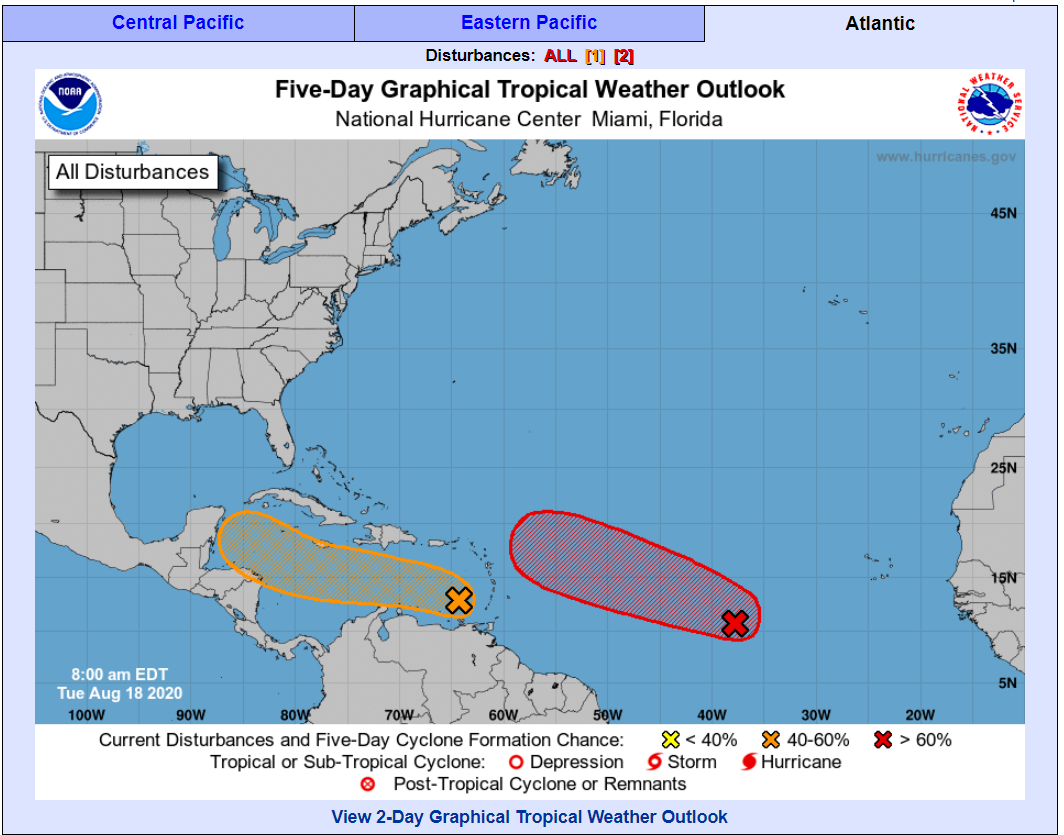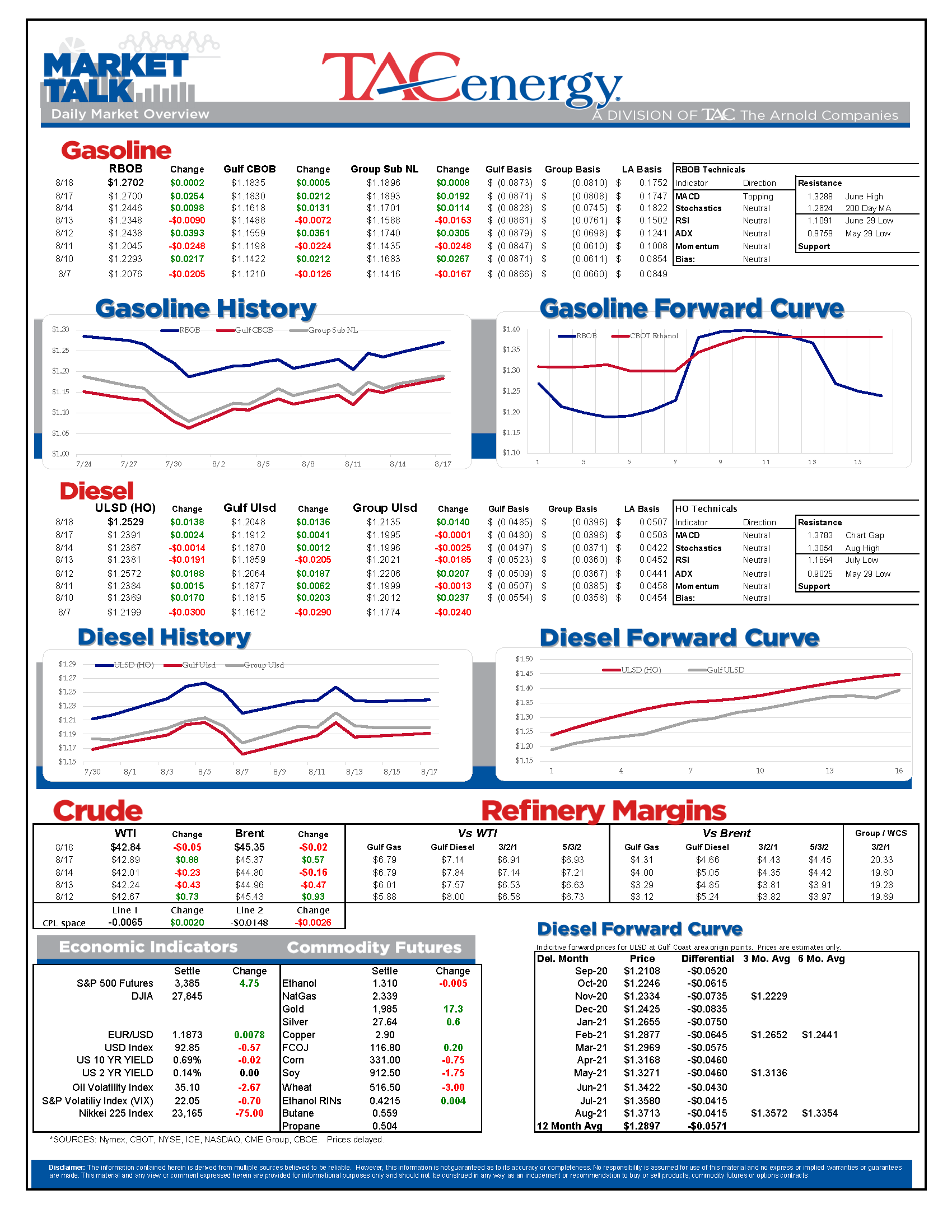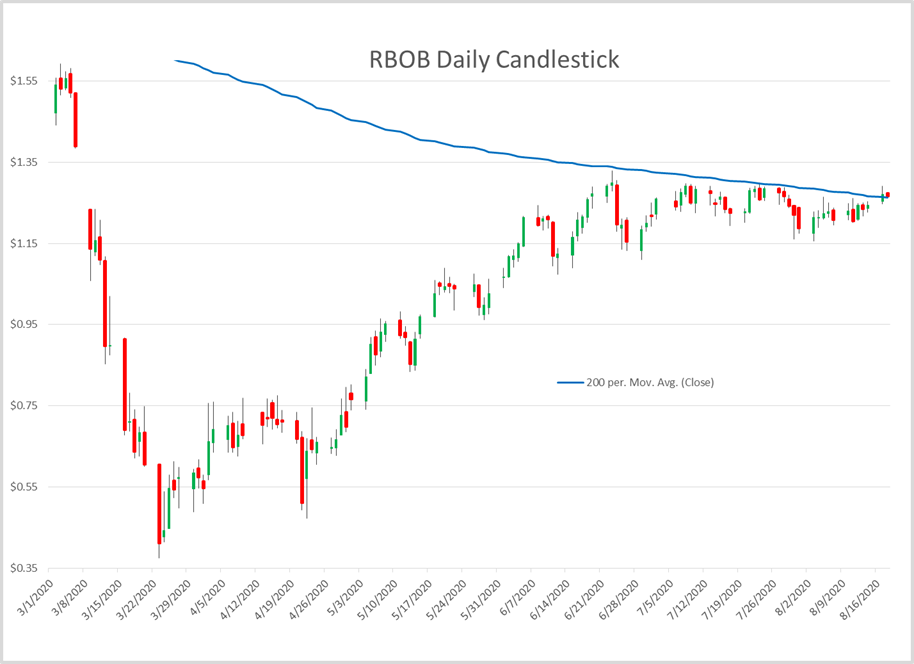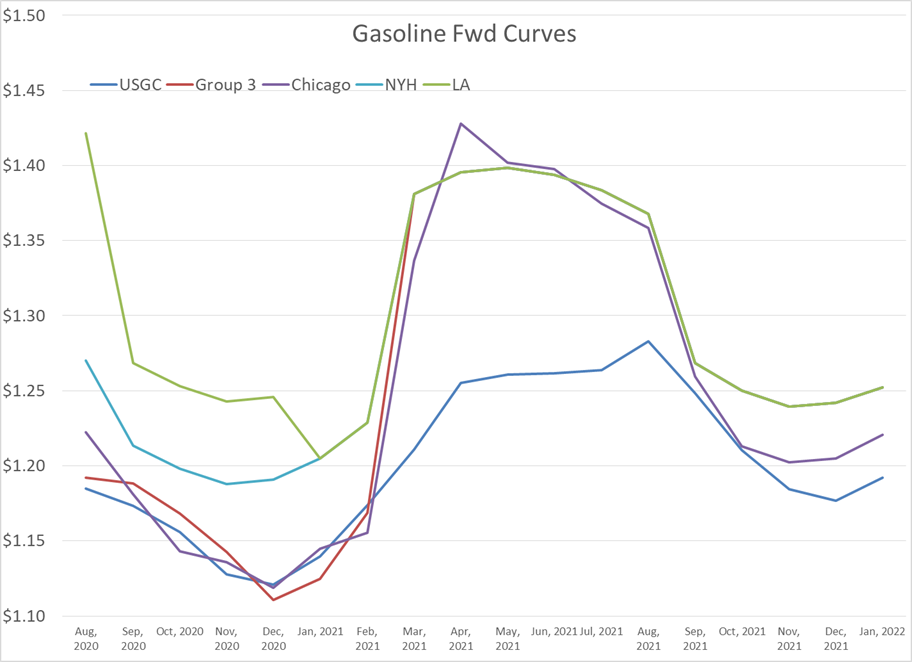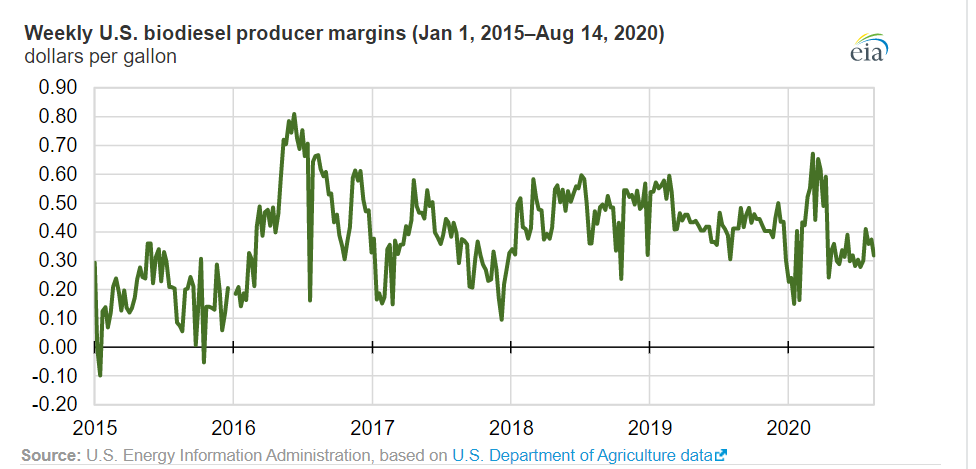Energy Prices Struggle For Direction

Energy prices continue to struggle for direction this week, with crude prices down slightly, diesel up slightly and gasoline flat, leaving the complex stuck in its sideways summer trading range. Tomorrow OPEC & Friends are holding a meeting to discuss output quotas, which could be the catalyst to break prices out of their range. So far, there are no indications that a shift in policy has been made.
Even the shutdown of the country’s largest gasoline pipeline wasn’t enough to push RBOB futures through upside resistance at the 200 day moving average, and there are less than two weeks remaining of the summer grade futures contract trading in the prompt position, which is making gasoline prices look vulnerable to a big move lower if they can’t figure out a way to rally this week.
It’s a similar story for crude futures. Yes, WTI settled at its highest closing value in five months yesterday, but it has not threatened its intraday highs from earlier in the spring, and has sold off each time it’s traded near these levels. With Brent and refined products still entrenched in their sideways ranges, WTI is also looking like it’s in “rally or else” range.
Colonial’s main gasoline line remains shut, with repairs underway to fix a leak that spilled an estimated 63,000 gallons (1,500 barrels) in North Carolina. The pipeline also announced it was shifting operations to allow some gasoline to continue flowing via its main distillate line. Based on the muted market reaction, and the relatively small amount of fuel leaked, it appears that this issue will be solved in the next few days. There have been some allocation restrictions put in place in nearby terminals as a result of the reduced shipments, but so far nothing anywhere close to the widespread outages that we saw in 2016 when the pipeline had a similar shutdown following a leak.
The exception to the going nowhere rule is West Coast gasoline prices that reached their highest levels since March yesterday, thanks to a pair of unplanned refinery issues on top of the numerous economic run rate reductions.
The EIA this morning reported that bio-diesel production and margins have seen less of an impact from COVID demand destruction in 2020 than other fuels. The relative lack of impact is thanks to less blend percentage restrictions than ethanol and the various incentives in place to encourage blending. The report doesn’t mention that those incentives actually helped bio-diesel prices transact for negative values for an extended period this spring when ULSD futures were below $1. It does, however, warn that bio-diesel production will be challenged by growing imports of renewable diesel.
Just in time for no one to want to use it, the White House is enabling oil drilling in the Arctic National Wildlife Refuge. That would have been useful in 2008, not so much in 2020.
The national hurricane center is giving high probabilities for two new tropical storm systems to form in the Atlantic this week. The paths are unclear this far out, but either one still has the potential to be a threat to the U.S. next week.
Click here to download a PDF of today's TACenergy Market Talk.
Latest Posts
Energy Markets Rally Again Thursday After A Choppy Wednesday Session
Week 16 - US DOE Inventory Recap
Energy Markets Trading Quietly In The Red As Ethanol Prices Rally To Five-Month High
The Struggle For Renewable Producers Continues As A Rapid Influx Of Supply And Crashing Credit Prices Make Biodiesel
Social Media
News & Views
View All
Energy Markets Rally Again Thursday After A Choppy Wednesday Session
Energy markets are trying to rally again Thursday after a choppy Wednesday session. RBOB gasoline futures are leading the push higher, on pace for a 3rd consecutive day of gains after finding a temporary floor Tuesday and have added 12 cents from those lows.
Equity markets are pointing sharply lower after a weak Q1 GDP estimate which seems to have contributed to a pullback in product prices over the past few minutes, but don’t be surprised if the “bad news is good news” low interest rate junkies start jumping in later on.
The DOE’s weekly report showed sluggish demand for gasoline and diesel, but inventory levels in most markets continue to follow their typical seasonal trends. Refinery runs held fairly steady last week with crude inputs down slightly but total gross throughputs up slightly as most facilities are now back online from a busy spring maintenance season and geared up for peak demand this summer.
Propane and propylene exports spiked to a record high north of 2.3 million barrels/day last week, which demonstrates both the US’s growing influence on global product markets, and the steady shift towards “other” products besides traditional gasoline and diesel in the level of importance for refiners.
The EIA acknowledged this morning that its weak diesel consumption estimates reflected the switch to Renewable Diesel on the West Coast, although they did not provide any timeline for when that data will be included in the weekly survey. The agency acknowledged that more than 4% of the total US consumption is now a combination of RD and Biodiesel, and that number is expected to continue to grow this year. This morning’s note also suggested that weak manufacturing activity was to blame for the sluggish diesel demand across the US, while other reports suggest the freight recession continued through Q1 of this year, which is also contributing to the big shift from tight diesel markets to oversupplied in several regions.
Valero kicked off the Q1 earnings releases for refiners with solid net income of $1.2 billion that’s a far cry from the spectacular earnings north of $3 billion in the first quarter of 2023. The refining sector made $1.7 billion, down from $4.1 billion last year. That is a pattern that should be expected from other refiners as well as the industry returns to a more normal market after 2 unbelievable years. You wouldn’t guess it by looking at stock prices for refiners though, as they continue to trade near record highs despite the more modest earnings.
Another pattern we’re likely to see continue with other refiners is that Renewable earnings were down, despite a big increase in production as lower subsidies like RINs and LCFS credit values sting producers that rely on those to compete with traditional products. Valero’s SAF conversion project at its Diamond Green joint venture is progressing ahead of schedule and will give the company optionality to flip between RD and SAF depending on how the economics of those two products shakes out this year. Valero also shows part of why refiners continue to disappear in California, with operating expenses for its West Coast segment nearly 2X that of the other regions it operates in.

Week 16 - US DOE Inventory Recap

Energy Markets Trading Quietly In The Red As Ethanol Prices Rally To Five-Month High
Energy markets are trading quietly in the red to start Wednesday’s session after a healthy bounce Tuesday afternoon suggested the Israel-Iran-linked liquidation had finally run its course.
There are reports of more Ukrainian strikes on Russian energy assets overnight, but the sources are sketchy so far, and the market doesn’t seem to be reacting as if this is legitimate news.
Ethanol prices have rallied to a 5-month high this week as corn and other grain prices have rallied after the latest crop progress update highlighted risks to farmers this year, lower grain export expectations from Ukraine, and the approval of E15 blends this summer despite the fact it pollutes more. The rally in grain and renewables prices has also helped RIN values find a bid after it looked like they were about to test their 4-year lows last week.
The API reported small changes in refined product inventories last week, with gasoline stocks down about 600,000, while distillates were up 724,000. Crude oil inventories increased by 3.2 million barrels according to the industry-group estimates. The DOE’s weekly report is due out at its normal time this morning.
Total reported another upset at its Port Arthur refinery that’s been a frequent flier on the TCEQ alerts since the January deep freeze knocked it offline and damaged multiple operating units. This latest upset seems minor as the un-named unit impacted was returned to normal operations in under an hour. Gulf Coast basis markets have shrugged off most reports of refinery upsets this year as the region remains well supplied, and it’s unlikely we’ll see any impact from this news.
California conversely reacted in a big way to reports of an upset at Chevron’s El Segundo refinery outside of LA, with CARBOB basis values jumping by more than a dime. Energy News Today continued to show its value by reporting the upset before the flaring notice was even reported to area regulators, proving once again it’s ahead of the curve on refinery-related events. Another industry news outlet meanwhile struggled just to remember where the country’s largest diesel seller is located.
Click here to download a PDF of today's TACenergy Market Talk
